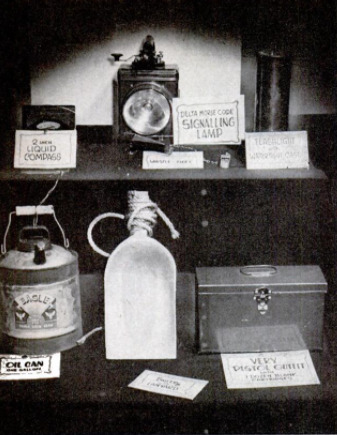-
Title (Dublin Core)
-
New training and equipment for seamen security
-
Article Title and/or Image Caption (Dublin Core)
-
Title: Cheating Axis torpedoes
-
Subtitle: Sound training and good equipment now bring shipwrecked seamen back to port
-
extracted text (Extract Text)
-
IT WAS all over before you could say “All
hands on deck—man the lifeboats!” One
minute Marty was standing watch on the
graveyard shift, wondering if he really saw
a streak of foam creasing the inky waters—
the next, the whole ship heaved and shud-
dered and, with a terrible splintering crash,
split in two.
In a matter of seconds, or so it seemed
to Marty, the deck he stood on was awash
and he was going under. Worse yet, the
lifeboats up forward were lost, and Marty's
hand had been badly crushed by a hurtling
piece of deck plate. But he was in very
little danger. For one thing, he had a new-
style kapok vest strapped tightly around
his torso, and, in addition, his rubber life
suit was half on, with the sleeves tied
around his waist. In practically nothing
flat he had his arms inserted in the sleeves
and the helmet adjusted over his head. One
yank with his good hand zipped the slide
fastener shut up to his neck. His water-
tight emergency safety bag, full of valu-
able gear, was right beside him, and in an-
other moment he had it hanging over his
shoulder. Had he been caught without any
other equipment, this little bag would have
saved the day for Marty, for there was
enough air trapped in it to support the
weight of two m a in the water.
‘What subsequently happened to this typi-
cal seaman is now a common story among
the gallant men of our merchant marine.
‘With his air-filled .fe suit, his inflated
bag, and his kapok vest, he had buoyancy
to spare, and he wasn't pulled down very
far by the suction from the sinking boat,
nor even by the davit guy wire that mo-
mentarily coiled around his boots. As soon
as he shot to the surface, he kicked himself
upright, and the next moment he was flash-
ing the red signal light clamped to the
chest of his rubber suit. Some of his ship-
mates who had managed to lower away one
of the life boats aft were attracted by the
flickering light, and soon had hauled him
into their boat. Here there was an ample
stock of sulfa drugs and other medicinal
supplies in the emergency first-aid kit, and
Marty's hand was carefully attended to.
Even better, the boat was equipped with
a portable radio receiving and transmitting
set. The ship's radio operator had gone
down with the vessel, but there was no
difficulty in operating the radio, since it
had an automatic signal which flashed re-
peated SOS’s over the international-distress
wave length to all ships at sea and coastal
listening posts. This distress signal was
picked up by a near-by Coast Guard sta-
tion, which speedily dispatched a rescue
boat. There was no trouble in finding the
lifeboat a few hours later, because Marty's
comrades kept shooting up brilliant red
parachute flares from their signaling gun.
Today, a little more than a year after
the opening shot of the war, the United
States merchant marine has become expert
in meeting all emergencies at sea, and is
being equipped with a host of lifesaving
devices which bid fair to make it the safest
merchant fleet in the world.
How this safety streamlining was accom-
plished is a story of close co-operation be-
tween the Navy, the Coast Guard, the
Maritime Commission, the War Shipping
Administration, and hundreds of sailors in
the maritime unions-—men like Marty and
his mates who came back from sea with
recommendations based on first-hand ex-
perience. Early in the war, the National
Maritime Union, for example, drew up a
safety program designed to save lives,
ships, and cargoes from avoidable loss. In-
cluded in this program were urgent pleas
for better loading of ships: the proper
provisioning of lifeboats; the installation on
all merchant ships of lifesaving suits, rafts,
and defensive arms; the reconditioning of
quarters to accommodate Navy gun crews;
compulsory lifeboat and fire drills on every
boat before leaving port; the keeping of
lifeboats swung out on their davits at all
times; the establishment of an adequate
coast patrol through the requisitioning of
small private craft; the organization of
safety committees aboard all ships; and a
thorough training program for new men.
Government experts, engaged in _elabo-
rate research on their own, listened care-
fully to the men who man the ships and in
many instances adopted their suggestions.
Government agencies then swung into ac-
tion by drastically tightening the regula-
tions covering equipment and behavior on
board merchant vessels. Local Merchant
Marine inspectors in every port, operating
under the Coast Guard, Went over every
ship from stem to stern, checking the safety
equipment and supervising the installation
of new gear. The Division of Training of
the War Shipping Administration, under
Telfair Knight, director of the division,and
Captain R. R. McNulty, assistant director
and supervisor of the Merchant Marine
Cadet Corps, has set up 13 centers for
the training of thousands of men. Some of
these centers are cadet schools which are
training men from civilian life and seamen
up from the fo'csle for both licensed and
unlicensed ratings in the Merchant Marine.
Others, like the huge Sheepshead Bay Mari- |
time Training Station at Oriental Point,
N. Y., are preparing men to be stewards,
deck "hands, and boiler-room apprentices,
Tn every school a strenuous Safety Seaman. |
ship Program has been instituted, |
The United States Merchant Marine
Academy—Ilocated at Kings Point, L. I, on
the luxurious grounds that were formerly
the estates of Walter P. Chrysler, Nicholas
Schenck, and the late movie star, Thomas |
Meighan—is typical of the Government's
cadet training centers. Entrance require-
ments are every bit as tough as the Navy's.
Only high-school graduates of good char-
acter, and who can pass stiff physical and
intelligence tests, are admitted. Cadet offi-
cers, taken from civil life, receive 10 weeks
of preliminary training, then spend six
months at sea, and finally return to school
for six to eight months of additional in- |
struction. Their classes cover naval science,
seamanship, navigation, cargo loading, ship
construction, lifeboat certification, and a
heavy dose of Safety Seamanship—in other
words, a course of study that runs the
whole nautical gamut.
Before certification, the cadets go through
a four-hour drill which simulates the actual
conditions of a vessel under fire. This is
the acid test, and it takes real proficiency
to survive it.” Some of the men, designated
as casualties, are lowered into lifeboats and |
given first-aid treatment while the crew
is pulling away
from the ship. Then the lifeboatman in |
charge makes a thorough inspection of the |
boat. Once he has ascertained that it is
seaworthy—in an actual sinking he would |
have to supervise the plugging of all holes |
caused by machine-gun strafing or any |
other mishap of battle—he checks all provi- |
sions, distributes his men to the various
watches, and assigns duties to the whole
crew. He then appoints his next in com- |
mand and confers with them, studying the
pilot chart to determine the most suitable
point of land to head for.
When all these preparations have been
made and a course charted, the log must be |
written up and orders given. Now the rou-
tine life begins, and a tough life it is, as |
taught by the Academy instructors. Cadets |
learn that they must at all times maintain |
the strictest discipline to bolster flagging |
spirits—every man must be constantly oc. |
cupied, for idle minds are prey to fear and |
despair. No smoking is allowed on lookout, |
and talk is cut down to a reasonable mini-
mum; a man with his eyes peeled for a
passing ship or plane, or for land, must not
be distracted from his job. Most ticklish
task of all, and the most exacting, i to |
figure out the rationing of provisions. This |
depends partly on climatic conditions: more |
water is needed in the tropics; less water
and more hard provisions to provide body
warmth in northern latitudes. For the rest,
the time period over which supplies must
last is cautiously estimated by doubling the
number of days it will take to reach the
nearest point of land under favorable pre-
vailing winds. |
One of the commander’s first duties is to
call in all personal supplies before the ra-
tioning system is laid down. This rule is
nowhere so essential as in the control of
cigarettes. Smoking not only keeps a man's
spirits on even keel in the grimmest of
circumstances—it also cuts down his ap-
petite appreciably, and thus makes emerg-
ency rations go that much farther. Archie
Gibbs, twice-torpedoed deck hand who spent
four days as a prisoner aboard a German
sub, says “guys have been lost when they
stood up in the boat, said they were going
to mosey across the street for a smoke, and
stepped over the side.”
By the time the war comes to an end,
ours will be a merchant marine of seasoned
men, for the Government is doing every-
thing possible to make sure that men now
going to sea in American ships will be back
to finish the job.
-
Contributor (Dublin Core)
-
Bernard Wolfe (Article Writer)
-
Language (Dublin Core)
-
eng
-
Date Issued (Dublin Core)
-
1943-03
-
pages (Bibliographic Ontology)
-
84-89, 214
-
Rights (Dublin Core)
-
Public Domain (Google Digitized)
-
Archived by (Dublin Core)
-
Matteo Ridolfi
-
Marco Bortolami (editor)
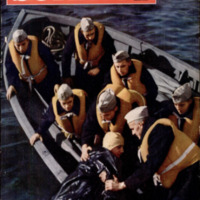 Popular Science Monthly, v. 142, n. 3, 1943
Popular Science Monthly, v. 142, n. 3, 1943
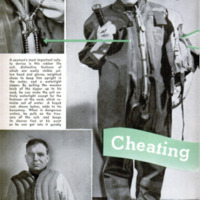 Schermata 2022-02-21 alle 15.39.12.png
Schermata 2022-02-21 alle 15.39.12.png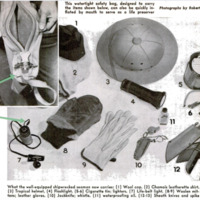 Schermata 2022-02-21 alle 15.39.30.png
Schermata 2022-02-21 alle 15.39.30.png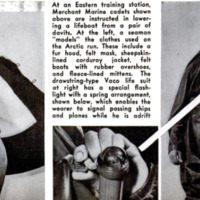 Schermata 2022-02-21 alle 15.39.46.png
Schermata 2022-02-21 alle 15.39.46.png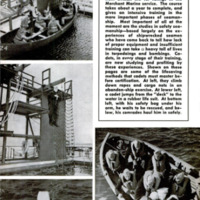 Schermata 2022-02-21 alle 15.40.03.png
Schermata 2022-02-21 alle 15.40.03.png Schermata 2022-02-21 alle 15.40.17.png
Schermata 2022-02-21 alle 15.40.17.png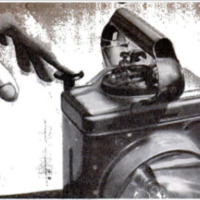 Schermata 2022-02-21 alle 15.40.22.png
Schermata 2022-02-21 alle 15.40.22.png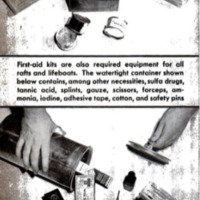 Schermata 2022-02-21 alle 15.40.50.png
Schermata 2022-02-21 alle 15.40.50.png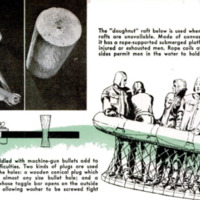 Schermata 2022-02-21 alle 15.40.58.png
Schermata 2022-02-21 alle 15.40.58.png




